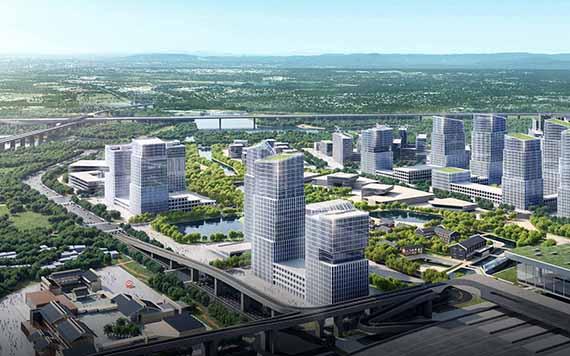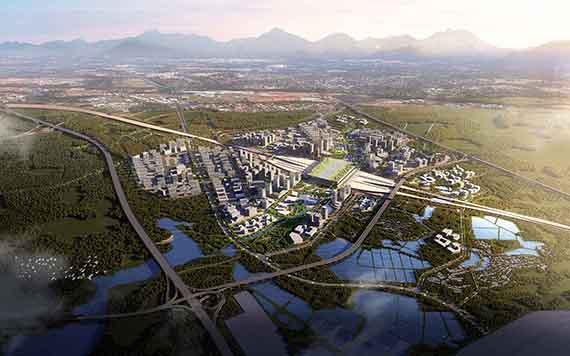Bid Winner | UD of New Hanyang Station
OBERMEYER participated in the international competition of the overall urban design of Wuhan Urban and Rural Coordination Demonstration Zone (ie the Overall Urban Design of the New Hanyang High Speed Railway Station District). By evaluation of many well-known experts, the acquisition plan of OBERMEYER stood out and won the bid. OBERMEYER will be in charge of the urban design deepening work.
The New Hanyang High-speed Railway Station is located at the junction of the three districts of Wuhan. With hub and regional environment advantages, it will become the engine of the development of the area in the future, driving the rapid development of the region. At the same time, creating the waterfront eco-green city is the maina central development goal of Wuhan, by protecting and taking full advantages of the local ecological features.
The economic positioning of OBERMEYER’s design focuses on large industrial areas by supporting the creation of a future-oriented industrial model, which is not restricted to the Hanyang District. Based on the local ecological characteristics, potential needs and development trends, the design of OBERMEYER puts forward the “in-site” concept to build the city.
OBERMEYER intends to create the new city as “Water Valley” in the west of Wuhan by interpreting “water” as the arena and “station” as the valley and combining the canals passing through with local architectural and cultural features. The design comprehensively develops the urban transportation with diversified functions in order to meet the diversified needs.
The landscape canal passes through the high-speed rail station area and forms a characteristic waterscape in the East and West Square. The East Square provides space for the civic center, financial services, and business offices as its main commercial forms. A diverse waterfront landscape will be formed by combining the commercial buildings with the traditional residential image with the sinking plaza and the water system.
The West Square offers its place to cultural tourism, hotels and technology research & development centers as its commercial forms, by combining a large area of water to form a unique cultural space. Through the combination of traditional villages and cultural tourism, the urban boundaries will be expanded and integrated into the ecological green space.
The slow traffic greenways will be extended from the station to the ecological conservation area, forming different landscape spaces in different urban areas, which include warm and vibrant community parks, quiet and casual city parks, and ecologically diverse wetland parks. The characteristics of the blue and green water networks in Wuhan are concentrated to form a distinctive style of the new “water valley” City.
The industrial layout revolves around three core resources: hub, ecology, and industry. It will form an industrial chain centered on eco-environmental protection, with comprehensive health, new generation of information technology, extended by cultural tourism and supported by the urban service industry.
Another important approach is to reduce the impact of high speed rail construction on the natural environment of the area and build the ecological environment via a “city blending with the green and the water”.





